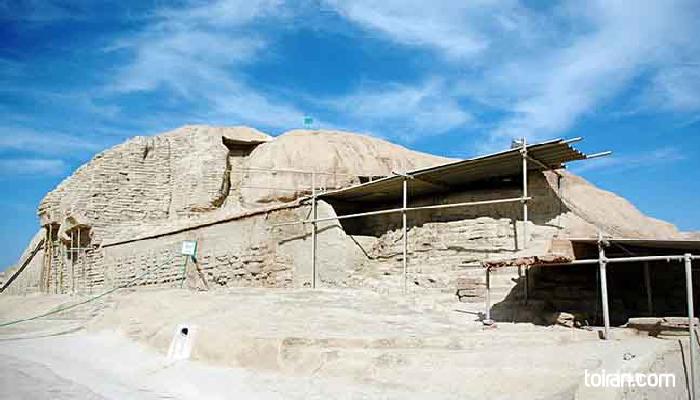The Sialk Mound (Tepe Sialk) is an Early Neolithic site near the city of Kashan. This mound is the place where man first used a form of mortar in construction and where cloth weaving, spooling and casting were invented.
Evidence suggests that the site, which is seven to nine thousand years old, was not only the starting point of Persian civilization but also the first place where religious thought was shaped.
Settlers were drawn to the region due to the abundant water supply provided by what is known today as Cheshmeh-e Soleiman (or 'Solomon's Spring') and first inhabited the region somewhere around 5,500 BC to 6,000 BC.
The two mounds in Sialk are located about 600 meters apart, excavations of the southern mound have yielded numerous clay and stone vessels and human remains from the fourth millennium BC.
The northern mound houses archeological remains dating back to the middle of the sixth millennium BC, i.e. about 7500 years ago and the world's oldest ziggurat. Ziggurats or celestial ladders were mud brick, stepped structures rising from the ground with a platform whereupon stood a temple believed to have been the city of god. Archeologists say these structures, which were built and used from around 2200 BC until 500 BC, were literally considered the House of God and were not used as a public place of worship or a place to perform religious ceremonies and rituals. There are only 25 ziggurats remaining today.
Built in 2900 BC, the ziggurat in Sialk is one of the four Elamite religious structures constructed in Mesopotamia. The other three are Susa ziggurat (1800 BC), Haft Teppeh (1375 BC) and Choqa Zanbil (1250 BC), which are all located in Khuzestan Province.
Based on excavations, the inhabitants of Sialk used a script form known as proto-Elamite, which is a combination of pictograms and numerals, and buried their dead in two cemeteries near the two mounds. The inhabitants of Sialk lived in homes they had made using leaves and tree branches and later learned to make clay shelters. The artifacts and potsherds found at the site indicate the ethnic diversity of its inhabitants.
The inhabitants of Sialk eventually moved to the southern mound and for unknown reasons deserted the area at the end of the Iron Age.
The site, which according to archeological finds is where human technology, industry and religious thought originated, has been registered as a National Heritage Site.




